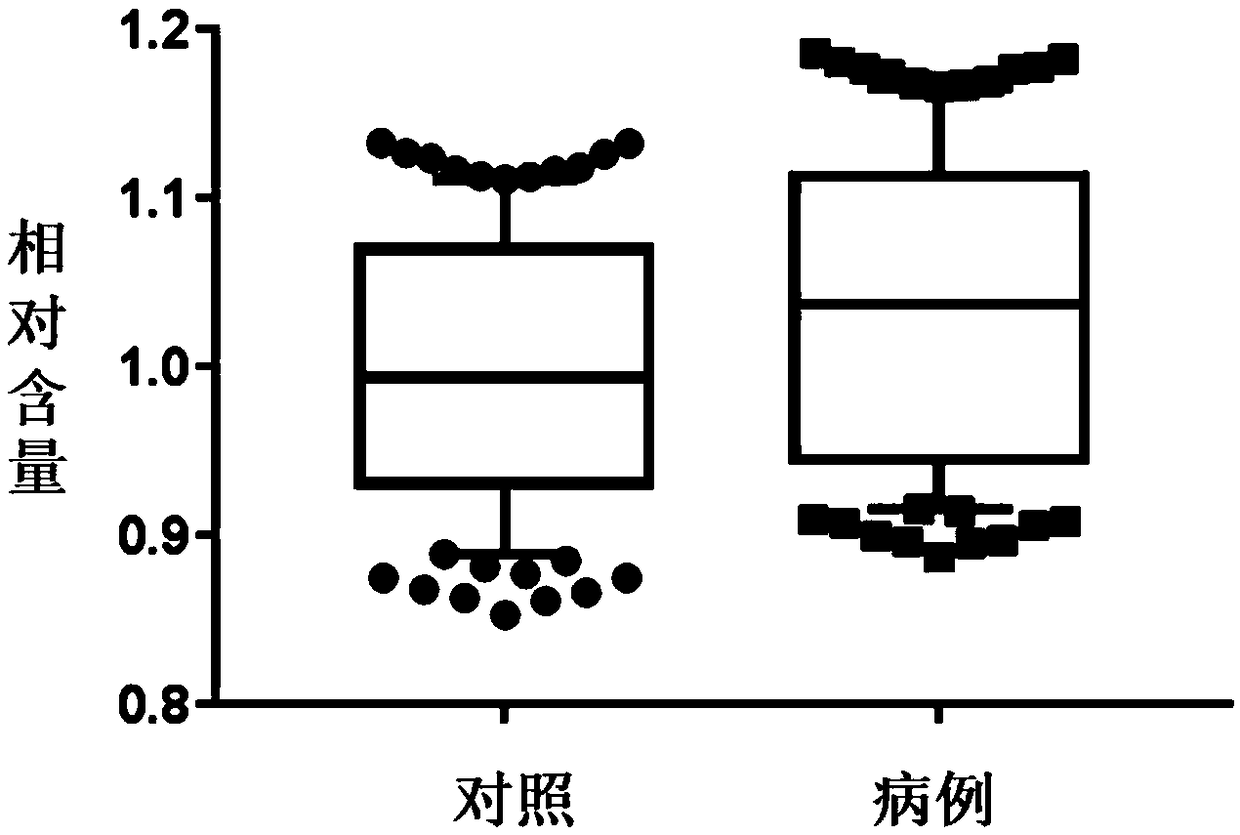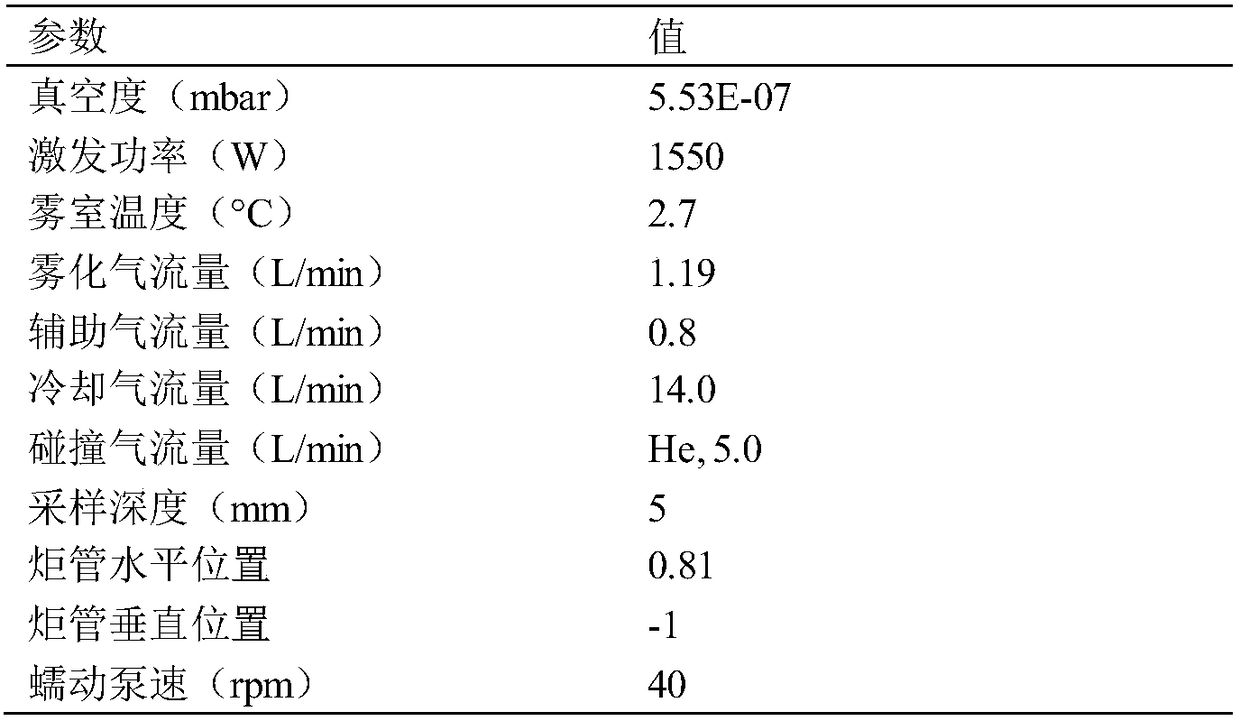ICP-MS-based (inductively coupled plasma-mass spectrometry-based) mercury and arsenic mixed exposure test low-birth-weight auxiliary diagnosis marker and application thereof
An ICP-MS, low birth weight technology, applied in the fields of analytical chemistry and clinical medicine, can solve the problems of undeveloped fetal growth and development, adverse effects on fetal development, unfavorable fetuses, etc., to delay and prevent disease progression, rapid and accurate instrument analysis , The effect of preventing sample contamination
- Summary
- Abstract
- Description
- Claims
- Application Information
AI Technical Summary
Problems solved by technology
Method used
Image
Examples
Embodiment 1
[0068] Embodiment 1 Research Object Selection and Grouping Basis
[0069] The inventors collected whole blood samples from low birth weight cases and normal control groups that met the requirements from Nanjing Maternal and Child Health Hospital Affiliated to Nanjing Medical University. Those with normal birth weight were regarded as controls, and those with low birth weight were regarded as cases. A total of 111 cases were randomly included, and 111 healthy controls were matched according to maternal age and BMI. A total of 222 people were used as experimental subjects for the mixed exposure assessment of mercury and arsenic with low birth weight. The specific sample classification criteria are as follows:
[0070] The first stage of association exploration
[0071] A total of 111 case infants were included, and 111 matched controls were matched according to mother's age and BMI, totaling 222.
[0072] Group A: healthy control group (111 people, normal birth weight):
[0...
Embodiment 2
[0082] Example 2 Analysis of ICP-MS detection of mixed exposure to mercury and arsenic and risk of low birth weight
[0083] 1. Sample pretreatment
[0084] Take 100 μl of whole blood, add 4.9ml of reagent A (that is, dilute 50 times), and mix thoroughly.
[0085] 2. Instrument testing
[0086] 1) Analytical instrument: ICAP RQ ICP-MS (Thermo)
[0087] 2) Instrument conditions: After the ICP-MS is ignited and started, it is stable for about half an hour. Pump 1ppb tuning solution, according to the sensitivity of Li, In and U, oxide (CeO) and double charge (Ba 2+ ) level, tune the entire mass range (4-290 amu) and reach the best state. Tuning requirements meet the following standards: standard mode sensitivity 7Li≥4000 cps / ppb, 115In≥15000cps / ppb; 238U≥20000cps / ppb; standard mode double charge Ba 2+ / Ba<3.0%; standard mode oxide 156CeO / 140Ce<2.0%.
[0088] 3) Recommended parameters for ICP-MS
[0089]
[0090]
[0091] 4) Sampling method: automatic sampling, sampli...
Embodiment 3
[0098] Example 3 Production of a kit for detecting mixed exposure to mercury and arsenic in male whole blood to aid in the diagnosis of low birth weight
[0099] Firstly, the ICP-MS method was used to determine the high levels of mercury and arsenic concentrations in the whole blood of the case group (the exposure level was above the 75% quantile of the total sample), and then it was found that the healthy control group was different from the case group through the Chi-square test. There were significant differences in the composition ratio of individuals with exposure levels. The number of people with high exposure in the case group was more than that in the control group. High exposure to mercury and arsenic significantly increased the risk of low birth weight. Detection of mixed exposure to mercury and arsenic can be used for auxiliary diagnosis of low birth weight. This kit includes a batch of reagents and consumables for the detection of mercury and arsenic in whole blood...
PUM
 Login to View More
Login to View More Abstract
Description
Claims
Application Information
 Login to View More
Login to View More - R&D
- Intellectual Property
- Life Sciences
- Materials
- Tech Scout
- Unparalleled Data Quality
- Higher Quality Content
- 60% Fewer Hallucinations
Browse by: Latest US Patents, China's latest patents, Technical Efficacy Thesaurus, Application Domain, Technology Topic, Popular Technical Reports.
© 2025 PatSnap. All rights reserved.Legal|Privacy policy|Modern Slavery Act Transparency Statement|Sitemap|About US| Contact US: help@patsnap.com



